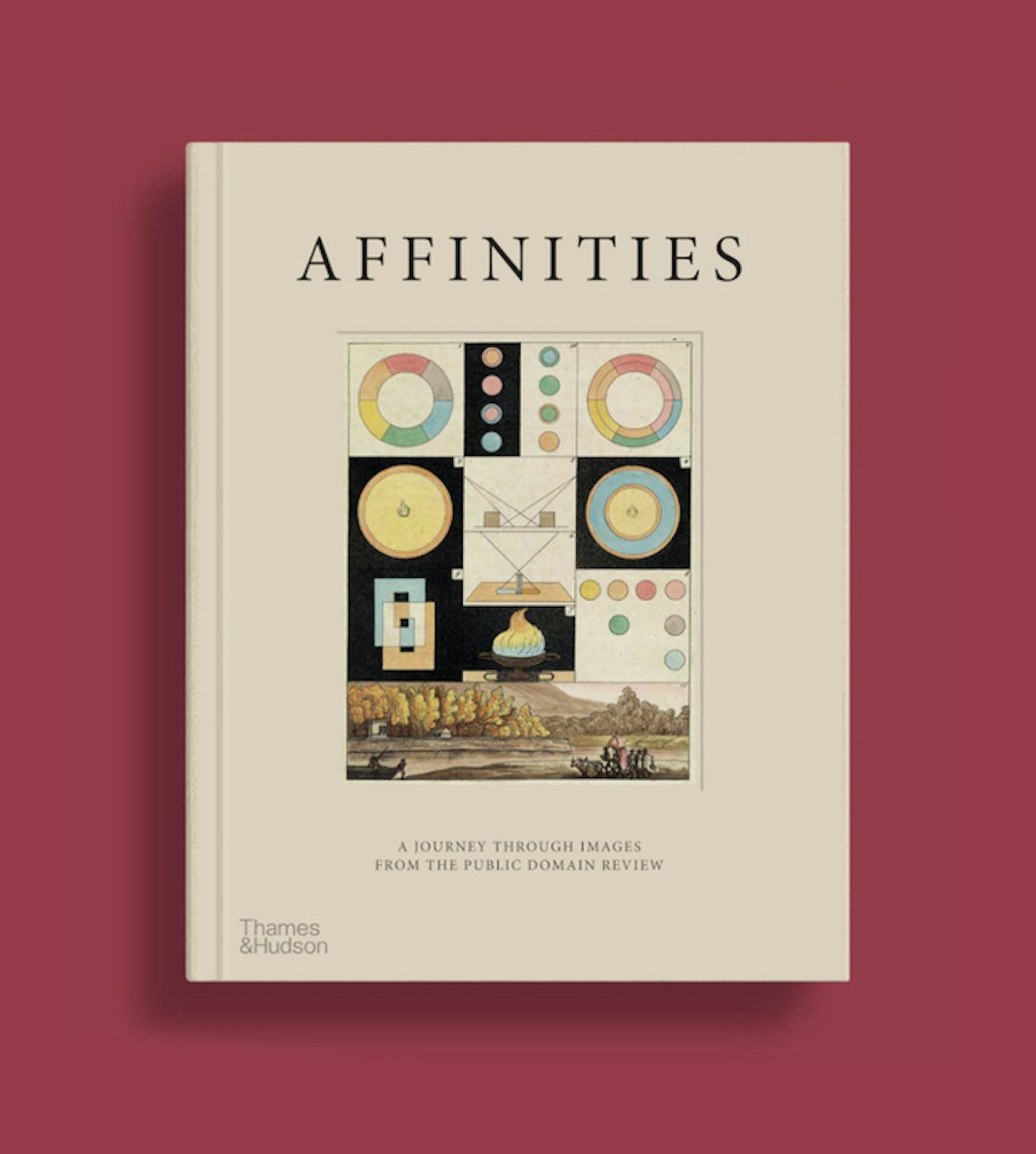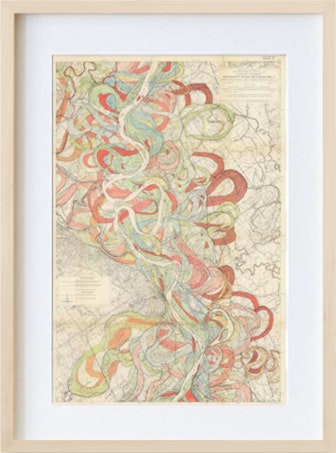
Love Spells and Deadly Shrieks: Illustrations of Mandrakes (ca. 650–1927)
Discussing the mandrake in his Transcendental Magic: Its Doctrine and Ritual (1854), the occultist magician and writer Éliphas Lévi asked:
Is this root the umbilical vestige of our terrestrial origin? We dare not seriously affirm it, but all the same it is certain that man came out of the slime of the earth, and his first appearance must have been in the form of a rough sketch. . . . The first men were, in this case, a family of gigantic, sensitive mandragores, animated by the sun, who rooted themselves up from the earth.
Lévi was far from the first to be fascinated by the strange, humanoid appearance of mandrake roots. They have had a long cultural history, steeped in medicine, mysticism, and myth, potentially reaching as far back as Ancient Egypt and Mesopotamia. The earliest reliable textual description of the mandrake appears in Genesis 30:14–19, in which mandrake berries make a barren woman fertile. Since then, they have been figured in countless medical texts and pictured in herbals as little bearded men or bushy haired women with forked root legs. These range from carefully painted manuscripts from medieval herbals to printed eighteenth-century compendiums, from across Europe and Asia. Many were illustrated versions of much older texts, remade multiple times over the centuries, preserving ancient mandrake lore.
The mandrake or mandragora described by Ancient Greek physicians was most likely the Mediterranean species Mandragora officinalis — part of the Solanaceae or nightshade family. These plants produce “tap roots” that thicken to create the appearance of subterranean humanoids. Take for example the suggestive root forms of the mandrakes in a seventh-century manuscript from Naples of Dioscorides’ De materia Medica, or the eerie, long-fingered mandrake in the nineteenth-century manuscript of Pseudo-Apuleius’ De herbarum medicaminibus. These roots could be animated into even more elaborate humanoid forms, as in the Hortus sanitatis, published by Jacob Meydenbach in Germany in 1491, in which the mandrakes are coyly smiling miniature humans with leafy headpieces. Presenting the roots as actual humans was not pure imaginative fancy: it emphasised the potency of the mandrakes and their mythology.
 Scroll through the whole page to download all images before printing.
Scroll through the whole page to download all images before printing.The roots, leaves, and yellow fruits of the mandrake contain hallucinogenic tropane alkaloids, which cause blurred vision, racing heart rate, vomiting, dryness in the mouth, and a host of other symptoms. Strong doses can act as narcotics, causing temporary paralysis and unconsciousness, along with delirium and hallucinations. According to Maud Grieve’s A Modern Herbal (1931), mandrake was “used in Pliny's days as an anaesthetic for operations, a piece of the root being given to the patient to chew before undergoing the operation”. They were also valued as emetics, aphrodisiacs, and sleeping aids; used to treat rheumatism, melancholy, and a host of other ailments. Hippocrates described, around 400 BCE, how mandrake, taken as “a small dose in wine, less than would occasion delirium, will relieve the deepest depression and anxiety”.
Along with their medicinal uses, mandrakes had magical powers. In the fourth century, Pseudo-Apuleius described how mandrake could remove the effects of demonic possession: “For witlessness, that is devil sickness or demoniacal possession, take from the body of this said wort mandrake by the weight of three pennies, administer to drink in warm water as he may find most convenient - soon he will be healed”. Mandrake amulets or figures, known as puppettes or mammettes, were used from the medieval period to bring good fortune and happiness, even to cure sterility. See for example the mandrake charms in Bernard Picart’s engraving from eighteenth-century France. Mandrakes were also thought to grow under the bodies of hanged men and became associated with incontinence and rigor erectus; one eighteenth-century writer described how: “At the foot of the gallows on which a man has been hanged and where urine has been voided at the time of death, there springs up a plant with broad leaves and a yellow flower. The root of the plant exactly represents the human form, from the hair of his head to the sexual organs”. Mandrakes were thus often seen as tools of witches, used in their hallucinogenic flying ointment and in various brews and spells, including love potions.
 Scroll through the whole page to download all images before printing.
Scroll through the whole page to download all images before printing.Mandrakes were perilous, however. When unearthed, they were thought to be dangerous to touch and to emit a deadly shriek. Fear of the mandrake’s fatal wail inspired inventive methods for harvesting them. They are often pictured in herbals with a dog tied to them by a rope, as in the Herbarium Apeulii from Lombardy (ca. 1400). Someone wanting to harvest a mandrake could apparently loosen the earth around the root, tie one end of a rope to it and the other end to a dog, and then move quickly away. The dog would follow, often coaxed by food, and drag the mandrake up, succumbing to its deadly cry and rendering the root safe to handle. In the late fifteenth-century manuscript of the Tacuinum sanitatis, based on an eleventh-century Arabic text, a man shields his ears from the expected cry while the dog unwittingly pulls on the rope around a serene-looking mandrake. In a fifteenth-century manuscript of Dioscorides, the dog is pictured as firmly deceased, while two men examine the mandrake in safety. It was suggested that this process was best done by moonlight, or using a sword or ivory staff to ward off any evil spirits that might lurk in the mandrake.
Below you can find a selection of mandrake illustrations spanning more than twelve centuries, from medieval herbals to William Blake and beyond.
Naples Dioscurides, a manuscript of De Materia Medica, Cod. Gr. 1 (Biblioteca Nazionale Napoli), ca. 7th century, f. 90. – Source
Pseudo-Apuleius, 2° MS (Landesbibliothek Kassel), ca. 9th century, f. 34v. – Source
De materia medica, MS M.652 (Morgan), ca. 950, f. 104v. – Source
Cotton MS Vitellius C III (BL), ca. 12th century, f. 57v. – Source
Harley MS 1585 (BL), ca. 12th century. – Source
MS. Ashmole 1462 (Bodleian), ca. 12th century, f. 67r. – Source
MS. Ashmole 1462 (Bodleian), ca. 12th century, f. 45r. – Source
Sloane MS 1975 (BL), ca. 1175–1200, f. 49r. – Source
Sloane MS 1975 (BL), ca. 1175–1200, f. 49r. – Source
Medizinische Sammelhandschrift, HAN Cod. 93 (Österreich Nationalbibliothek), ca. 1200, f. 117v. – Source
Vienna Dioscorides, Cod. Med. gr. 1 (Österreich Nationalbibliothek), ca. 13th century, f. 289r. – Source
Reg.lat.258 (Apostolica Vaticana), ca. 13th century, f. 39v. – Source
Ms. Français 14964 (BnF), ca. 13th century, f. 167r. – Source
Ms. Français 14969 (BnF), ca. 13th century, f. 61v. – Source
Sloane MS. 278 (BL), ca. 1225–1275, f. 48v. – Source
Antonius Musa, Herbal, MS.573 (Wellcome), ca. 1225–1275, f. 35v. – Source
MS Or 3366 (BL), ca. 1334, f. 144v. – Source
Guillaume le Clerc, Biestiaires, Ms. Français 14970 (BnF), ca. 1301–1400, f. 27v. – Source
Royal MS 2 B VII (BL), ca. 14th century, f. 120r. – Source
Ms. R.14.9 (Trinity College Library, Cambridge), ca. 12th–15th century, f. 95v. – Source
Tacuinum sanitatis in medicina, Cod. Vindob. ser. nov. 2644 (Österreichische Nationalbibliothek), ca. 1390. – Source
Herbarium Apuleii, Ms. 18 (Yale Medical Library), ca. 1400, p. 81. – Source
Herbarium Apuleii, Ms. 18 (Yale Medical Library), ca. 1400, p. 82. – Source
Herbarium Apuleii, Ms. 18 (Yale Medical Library), ca. 1400, p. 83. – Source
Tractatus de Herbis, Sloane MS 4016 (BL), ca. 1440, f. 56v. – Source
Oversize LJS 419 Erbario (University of Pennsylvania), ca. 1400–1500, f. 36r. – Source
Oversize LJS 419 Erbario (University of Pennsylvania), ca. 1400–1500, f. 38v. – Source
Oversize LJS 419 Erbario (University of Pennsylvania), ca. 1400–1500, f. 39v. – Source
Gr. 3632 (Biblioteca Universitaria di Bologna), ca. 15th century, f. 378r. – Source
Gr. 3632 (Biblioteca Universitaria di Bologna), ca. 15th century, f. 379r. – Source
Grec 2183 (BnF), ca. 15th century, f. 104v. – Source
Erbario di Trento, Ms. 1591 (Castello del Buonconsiglio), ca. 15th century, f. 12r. – Source
Cod. 5264 (Österreich Nationalbibliothek), ca. 1450, f. 58v. – Source
Ms. Latin 17844 (BnF), ca. 15th century, f. 54v. – Source
(Arsenal Library, Paris), ca. 15th century. – Source
Dioscorides, De materia medica, BAV Chig. F. VII. 159 (Vatican City), ca. 15th century, f. 234v. – Source
Johannes Hartlieb, Kräuterbuch, in Cod. Pal. germ. 311 (Universitätsbibliothek Heidelberg), ca. 1455–1460, f. 289v. – Source
Johannes Hartlieb’s Kräuterbuch, 2021667734 (LoC), 1462, image 220. – Source
Pseudo-Apuleius, De herbarum virtutibus, Ar.26 (Biblioteca dell’Orto Botanico di Padova), ca. 1450–1500, f. 148r. – Source
Pseudo-Apuleius, De herbarum virtutibus, Ar.26 (Biblioteca dell’Orto Botanico di Padova), ca. 1450–1500, f. 184v. – Source
Ms.334 (Wellcome), ca. 1475, p. 41. – Source
Herbarium Apuleii Platonici, 4 Inc.s.a. 179 (Bayerische Staatsbibliothek), ca. 1481–82, f. 105v. – Source
[O]fft vnd vil habe ich by mir selbst betracht die wu[n]dersam werck des schepfers der natuer..., 9412223 (National Library of Medicine), 1485, p. 415. – Source
[O]fft vnd vil habe ich by mir selbst betracht die wu[n]dersam werck des schepfers der natuer..., 9412223 (National Library of Medicine), 1485, p. 417. – Source
Tacuinum sanitatis, Ms. Latin 9333 (BnF), ca. 1474–1499, f. 37r. – Source
Ortus sanitatis, 9413026 (NLM), 1491, p. 254. – Source
Ortus sanitatis, 9413026 (NLM), 1491, p. 256. – Source
Petrus de Crescentiis, Ruralia Commoda, RCIN 1057436 (Royal Collection Trust), ca. 1490–95. – Source
Herbarius zu teutsch, Inc 135 (Klassik Stiftung Weimar), 1496, p. 298:296. – Source
Liber Plantis, Hébreu 1199 (BnF), ca. 1500, f. 22v. – Source
Hieronymus Brunschwig, Kleines Destillierbuch, 1500. – Source
TR F Herbal (University of Vermont Library), ca. 1475–1525, p. 72. – Source
Oversize LJS 46 (University of Pennsylvania), ca. 1520, f. 16r. – Source
Arzneipflanzenbuch, Cod.icon. 26 (Bayerische Staatsbibliothek), ca. 1520–1530, f. 59r. – Source
Stefan Falimirz, O ziołach i o mocy ich (On herbs and their powers), BJ St. Dr. Cim. 4398 (Biblioteka Jagiellońska), 1534. – Source
Hortus sanitatis, Me 4° 1 (Herzog August Bibliothek), 1536, p. 00337. – Source
Hortus sanitatis, Me 4° 1 (Herzog August Bibliothek), 1536, p. 00339. – Source
Otto Brunfels, Kreuterbuch Contrafeyt, Res/2 M.med. 44 (Bayerische Staatsbibliothek), 1546, title-page illustration. – Source
Harley MS 3736 (BL), ca. 16th century, f. 59r. – Source
Ms. Aldrovandi, 152 (Biblioteca Universitaria di Bologna), ca. 1550–1605, f. 150r. – Source
Hortus Eystettensis, 45339 137 (BHL), ca. 1640, p. 126. – Source
Tomás Murillo y Velarde Jurado, Tratado de raras, BH MED 3457(2) (Biblioteca Complutense), 1674, p. 19. – Source
Illustration of Zakarīyā Ibn Muḥammad al-Qazwīnī‘s Wonders of Creation, Ms. Supplément turc 1063 (BnF), 1676, f. 17v. – Source
Estampes pour servir à l'histoire des plantes, vol. 2, L0075040 (Wellcome), 1701. – Source
Engraving based on plates 1 and 2 from Augustin Calmet, Dictionnaire historique, critique, chronologique, géographique et littéral de la Bible, 1730. – Source
RARE RBR N-2-1 (Dumbarton Oaks Research Library), ca. 1700–1799, p. 1. – Source
William Blake, “I found him beneath a Tree”, Plate 3 from The Gates of Paradise (Yale Center for British Art, Paul Mellon Collection), 1826. – Source
Engraving from Atlas géographique et iconographique du cours complet d'Écriture sainte, 1844. – Source
Robert Bateman, Three People Plucking Mandrake, ICV No 17588 (Wellcome), ca. 1870. – Source
Sculpted mandrake from Mexico, pictured in the Hungarian magazine Aller Lapja, 1927 – Source
Imagery from this post is featured in
Affinities
our special book of images created to celebrate 10 years of The Public Domain Review.
500+ images – 368 pages
Large format – Hardcover with inset image
May 14, 2024






